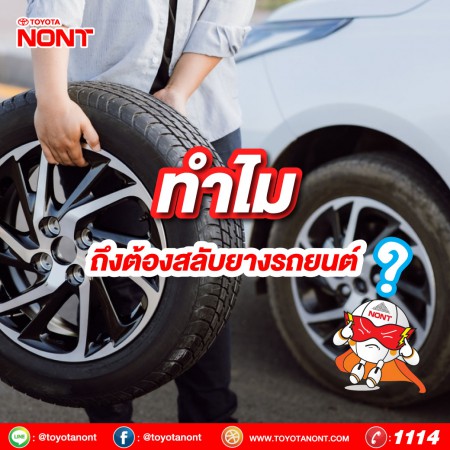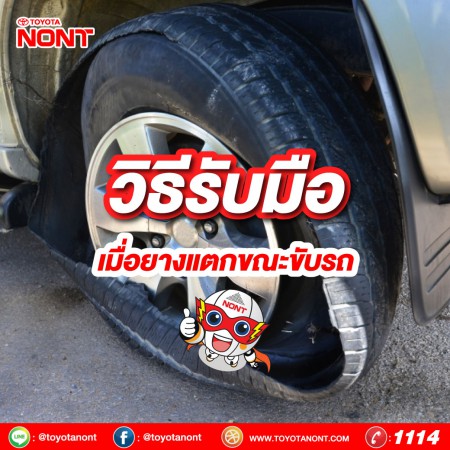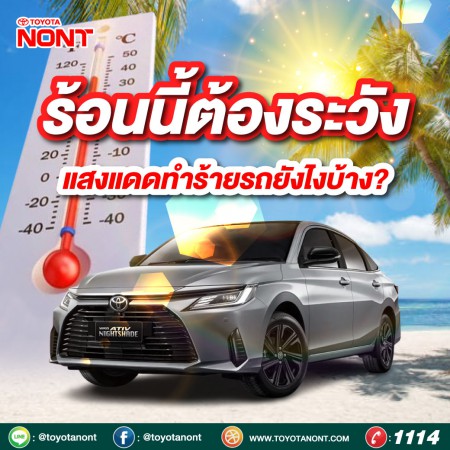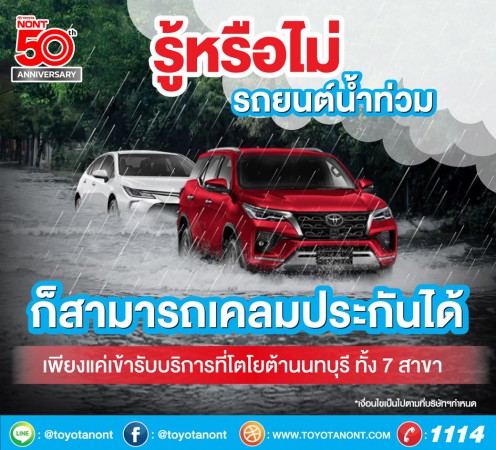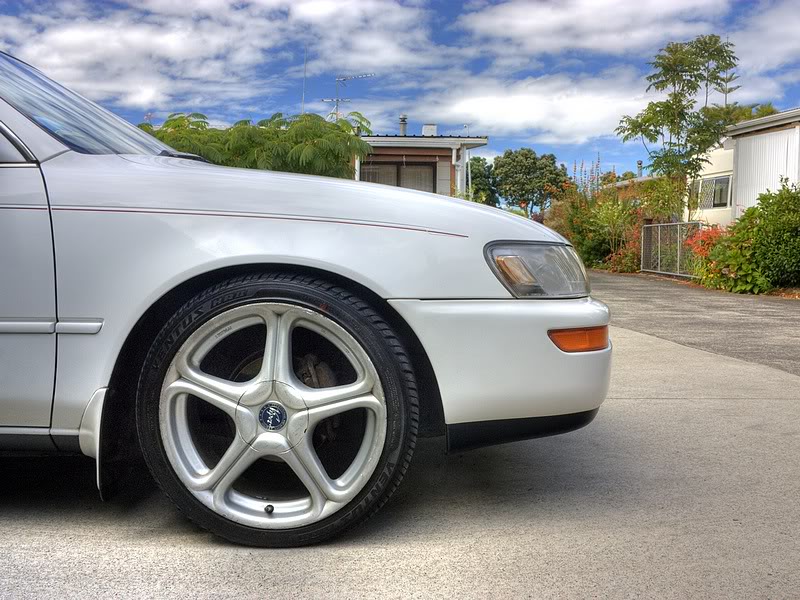

Toyota Corolla E100
The Corolla E100 was the seventh generation of cars sold by Toyota under the Corolla nameplate.
This generation Corolla was larger, heavier, and visually more aerodynamic than the model it replaced, with development chief Dr. Akihiko Saito wanting to develop a 'mini-Lexus', after success with that range's flagship. With its 2465 mm (97 in) wheelbase, the Corolla had moved into the compact size class once occupied by the Corona and Camry. The Corolla had an equivalent model Sprinter, with the Sprinter Trueno being equivalent to the Corolla Levin.
This model was not as successful compared to previous series due to a rising yen and the beginning of the collapse of the Japanese asset price bubble driven recession in Japan, blunting demand.[citation needed]
The standard Corolla model range included the 3-door hatchback Corolla FX, 4-door sedan and 5-door station wagon models. Also returning in this generation was the two-door coupé Corolla Levin. A 4WD variant of the sedan and station wagon was also available with a 1.6 liter gasoline or 2.0 liter diesel engine.
The 4-door "pillared hardtop" Corolla Ceres and Sprinter Marino were introduced in 1992. They bore no real exterior resemblance but feature the chassis and most of the engine range of the standard Corollas, and used the Levin/Trueno dashboard. Minor face lift changes were introduced in May 1993 these included a new grille, a reconfiguration of the rear lamps and various bits of trim and garnish.
The E100 sedan and hatchbacks introduced in 1991 lasted until the introduction of the E110 in May 1995. "Van" and "Business Wagon" models were basically stripped out wagons with leaf-sprung solid axle rear suspensions. Business Wagons typically had slightly higher equipment levels than simpler vans. Both versions continued to serve the commercial vehicle market well into 2002, outliving the mainstream E110 models in Japan.
Asia
In the Philippines, the Corolla is nicknamed "Big Body".[citation needed] Three variants of the "Big Body" were sold, XL and XE with 1.3 liter carbureted (2E) engines, with the latter enjoying extra features like power steering, alloy wheels, digital clock and tachometer, and the GLi, with a 1.6 liter fuel-injected motor (4A-FE). The top model was offered in both manual and automatic transmissions. The Corolla "Big Body" was also the first 1.6 liter car to introduce 14-inch (360 mm) alloy wheels to the country in 1992. Other pioneer features that followed were rear seatbelts, front cup holders (late 1994) and a driver's airbag (late 1995). ABS followed during its later years.
The Corolla sedan is nicknamed the "Great Corolla" in Indonesia. Initially the trim levels were 1.3 SE and 1.6 SE-G. The smaller engine model was replaced by 1.6 SE in 1994. The 1.3 XLi, 1.5 GLi sedan, wagon, and Levin 1.5 SJ coupé were sold in Hong Kong.
North America
In North America, the Corolla was new for the 1993 model year. It had different headlights (independent high/low beams), grille, bumpers (extended) and trunk garnish for the Base and DX Sedans. The base model came with the 1.6 liter 4A-FE engine. The DX, LE and wagon came with the 1.8 liter 7A-FE. The 1993 and 1994 versions of the 7A-FE engine were rated at 86 kW (115 hp), later versions rated at 78 kW (105 hp) mainly due to differences of the intake shape. The LE has sporty front seats and was available in the US with A/T only or available in Canada with either A/T or M/T. Minor changes occurred for the 1996 model year. Among these changes, the DX received bright red/clear tail lights and rear garnish, and new wheel covers. The Base model and CE Sedan came with restyled gray plastic trunk garnish. Sporty Corollas and 4WD Corollas were no longer imported during this generation. Some 1993 Corolla sedans sold were also produced in Japan, due to factory delays. All of the wagons were produced at the Takaoka plant in Japan.
The coupé was dropped for North America, replaced by the Paseo.
North American market chassis codes:
AE101 — Sedan 4-door with 1.6 4A-FE (Standard, CE)
AE102 — Sedan 4-door and Wagon 5-door with 1.8 7A-FE (DX, LE)
South America
1993 model year Canadian-spec Corollas from Japan were sold in Chile because no Latin American models met emission standards by then. They featured a higher trim than most of its rivals at the time, since they all came with standard driver side airbag, larger bumpers, polycarbonate headlamp lenses. For the 1994 model year, a lower trim model was sold instead.
The Corolla sedan is nicknamed the "Baby Camry" in Venezuela.
In Perú and Bolivia, grey market imports from Japan are still highly popular.
The five-door Sprinter was sold as the Corolla Sprinter in some markets in Europe, and simply the Corolla liftback in others. The three and five-door Corolla hatchback was also sold in Europe, and was available mostly in normal (non-sports) specs unlike the three-door-only FX range available in Japan. In Europe, the hatchback sold better than the sedan and estate. Although basically the trim levels are Base, XLi and GLi, also there was the GS. The GS featured a fully color-coded exterior and with full electrics and a tilt/slide steel sunroof. It also had an upgraded interior with white dials and a rev counter. In UK the Corolla was marketed as S, CD, and CDX. A few select, rare models featured the 1.8L 7A-FE engine, including the 1.8 GXi 3-door hatchback in the UK, and the 1.8 XLi 4WD estate. The sedan has its rear license plate mounted on the trunk as opposed to the bumper on other region models.
Europe
The five-door Sprinter was sold as the Corolla Sprinter in some markets in Europe, and simply the Corolla liftback in others. The three and five-door Corolla hatchback was also sold in Europe, and was available mostly in normal (non-sports) specs unlike the three-door-only FX range available in Japan. In Europe, the hatchback sold better than the sedan and estate. Although basically the trim levels are Base, XLi and GLi, also there was the GS. The GS featured a fully color-coded exterior and with full electrics and a tilt/slide steel sunroof. It also had an upgraded interior with white dials and a rev counter. In UK the Corolla was marketed as S, CD, and CDX. A few select, rare models featured the 1.8L 7A-FE engine, including the 1.8 GXi 3-door hatchback in the UK, and the 1.8 XLi 4WD estate. The sedan has its rear license plate mounted on the trunk as opposed to the bumper on other region models.
In Europe's largest national auto-market, the E100 sustained the Corolla's reputation for reliability and economy. In 1995 it topped the small family car class in a reliability survey of 4-6 year old cars undertaken by the German Automobile Association (ADAC), with 5.3 recorded breakdowns per 1,000 cars for four-year-old cars and 10.1 for six-year-old cars: this compared with 12.0 breakdowns per 1,000 cars for four-year-old Volkswagen Golfs and 21.8 for six-year-old Golfs.[6] (The class loser was the Fiat Tipo with 38.3 breakdowns per 1,000 for four-year-old cars and 44.0 for six-year-old Tipos.)
Australia/New Zealand
In late 1992, New Zealand-assembled E100 Corollas were introduced to the New Zealand market. These vehicles were assembled at Toyota's Thames factory. Trim levels consisted of 1.3L XL, 1.6L GL, 1.6L GS, and 1.8L GLX, and were available in sedan, 5-door hatchback, 5-door liftback, and 5dr wagon.
During 1994, the E100 Corolla became the first Toyota model to be built at the new Altona plant (production of the Corolla from 1968-1993 was at the Port Melbourne facility). This model came in hatchback (Seca) and sedan variants. The trim levels consisted of 1.6L CSi (base model), 1.6L and 1.8L CSX, 1.8L Conquest, sporty 1.8L RV (hatchback only) and the top of the range 1.8L Ultima (sedan only). Special edition models were included in the model lineup, and between 1994 and 1996 Toyota also imported the 5-door liftback Sprinter model. In 1999, production of the E100 Corolla in Australia was terminated and Toyota Australia returned to Japanese imports, this time model AE112R.



